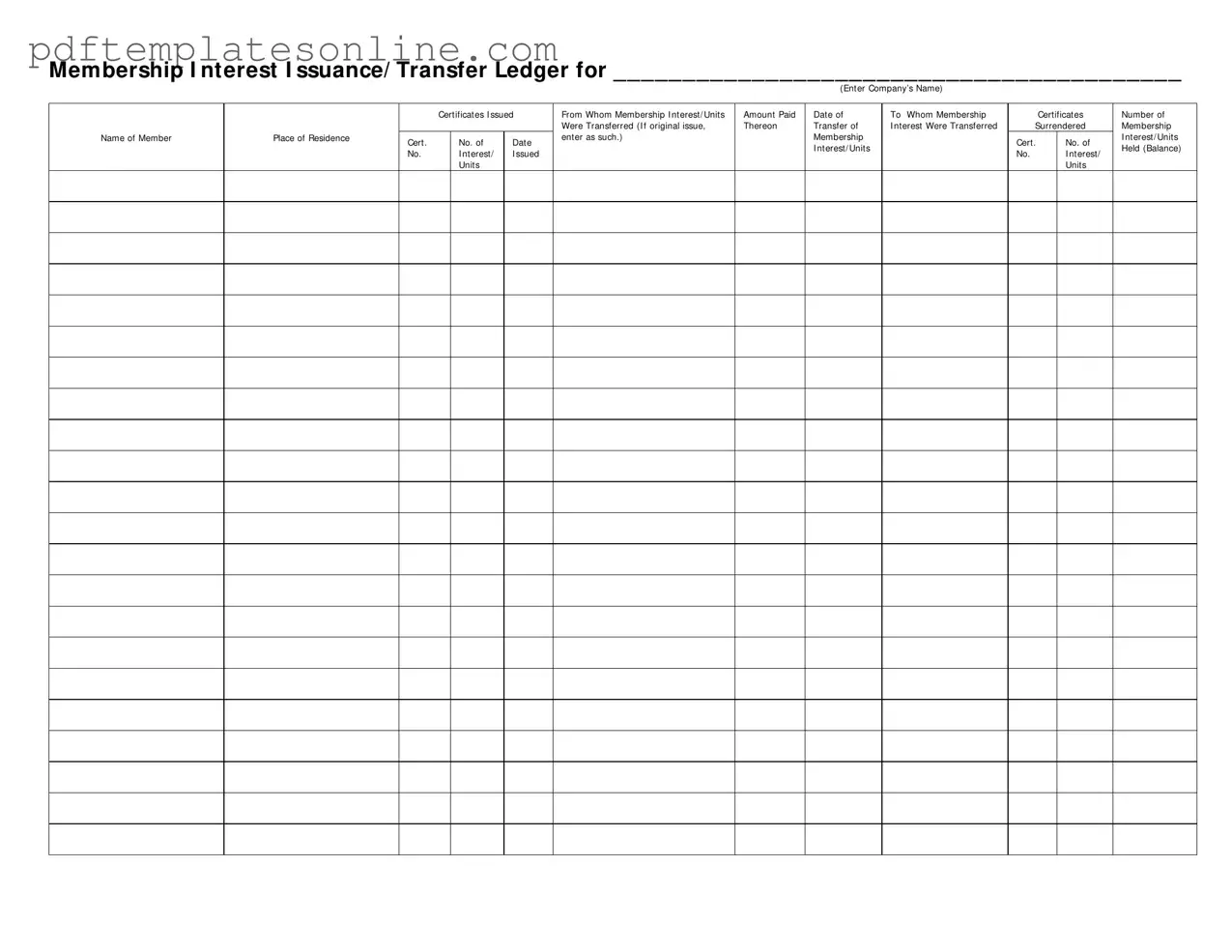Filling out the Membership Ledger form can seem straightforward, but many individuals stumble upon common pitfalls that can lead to confusion or even legal complications. One prevalent mistake is leaving the company name blank. This may seem minor, but without a clearly identified company, the entire ledger lacks context. Always ensure that the company's name is accurately entered at the top of the form.
Another frequent error involves misplacing the details of the certificates issued. Individuals often forget to include the certificate numbers or provide incorrect amounts. Each certificate should be accounted for, and the corresponding membership interest or units must match the figures listed. Inaccuracies here can lead to discrepancies in ownership records.
People sometimes overlook the importance of recording the correct dates. Whether it's the date of issuance or the date of transfer, these details are crucial. An incorrect date can create confusion about when ownership changed hands, potentially leading to disputes among members.
Additionally, failing to specify the recipient of the membership interest is a common oversight. When transferring units, the recipient's name must be clearly stated. Ambiguities in this section can result in ownership issues later on, so clarity is key.
Another mistake is neglecting to include the amount paid for the membership interest or units. This is vital information that reflects the financial transaction between parties. Omitting this detail can raise questions about the legitimacy of the transfer.
Some individuals also forget to indicate whether the membership interest was originally issued or transferred. This distinction is important for maintaining accurate records and understanding the history of the ownership. Always make sure to clarify this aspect on the form.
Moreover, people often fail to surrender the original certificates when transferring interests. If the original certificates are not returned, it can lead to confusion about who holds the rightful ownership. Always ensure that the original documents are accounted for during a transfer.
Another common error is miscalculating the balance of membership interests or units held. This section should reflect the total number of interests or units remaining after any transfers. Double-checking these figures can prevent future discrepancies and ensure that all parties are on the same page.
Lastly, individuals sometimes forget to sign the form. A signature is not just a formality; it serves as an acknowledgment of the information provided. Without a signature, the form may be deemed incomplete, leading to delays in processing.
By being mindful of these common mistakes, individuals can fill out the Membership Ledger form more accurately and efficiently. Attention to detail is essential in ensuring that ownership records are clear and legally sound.
